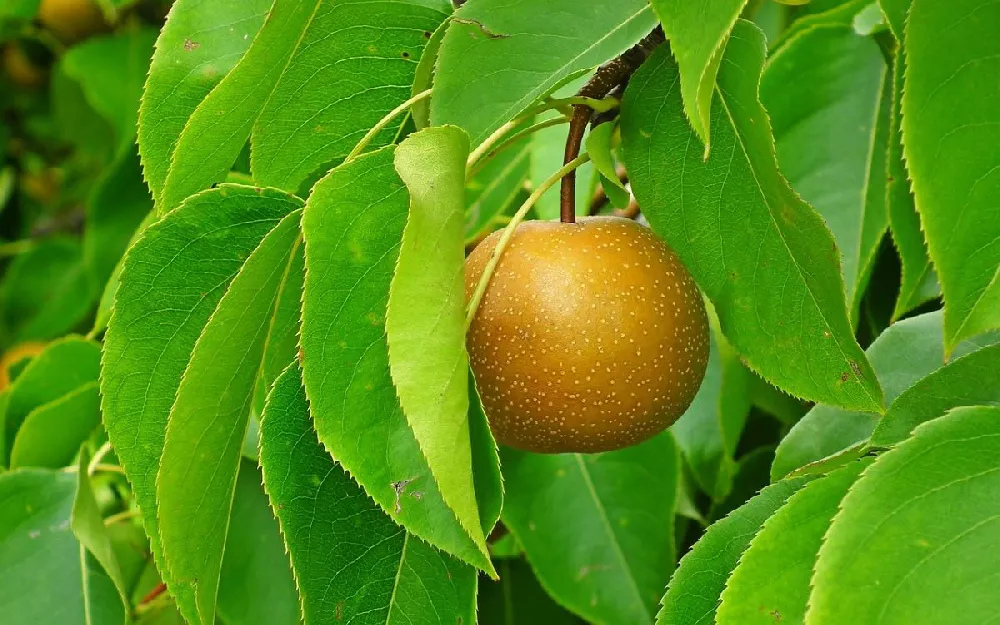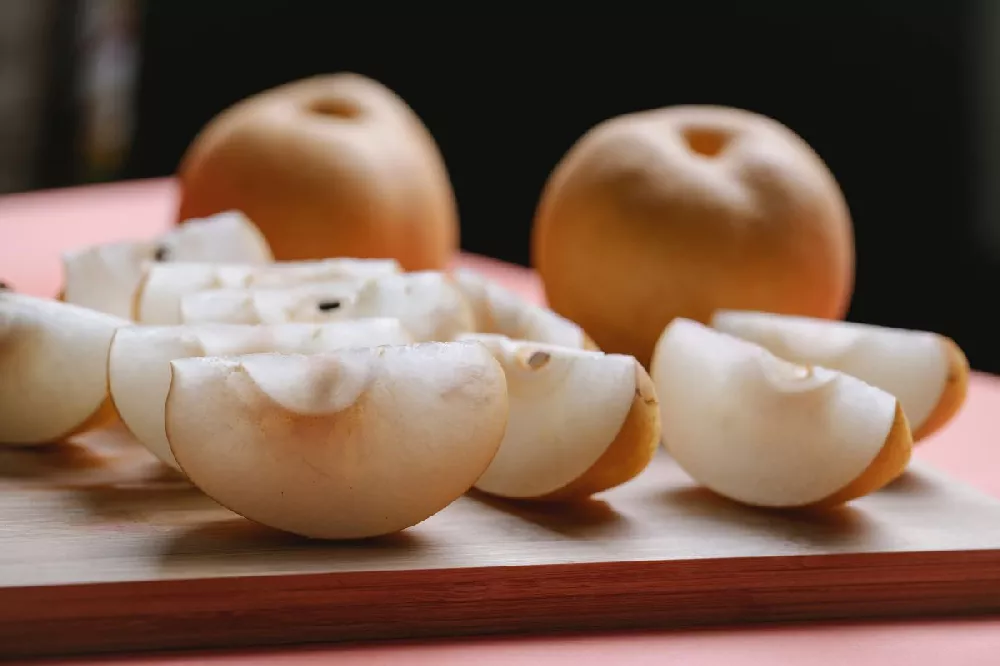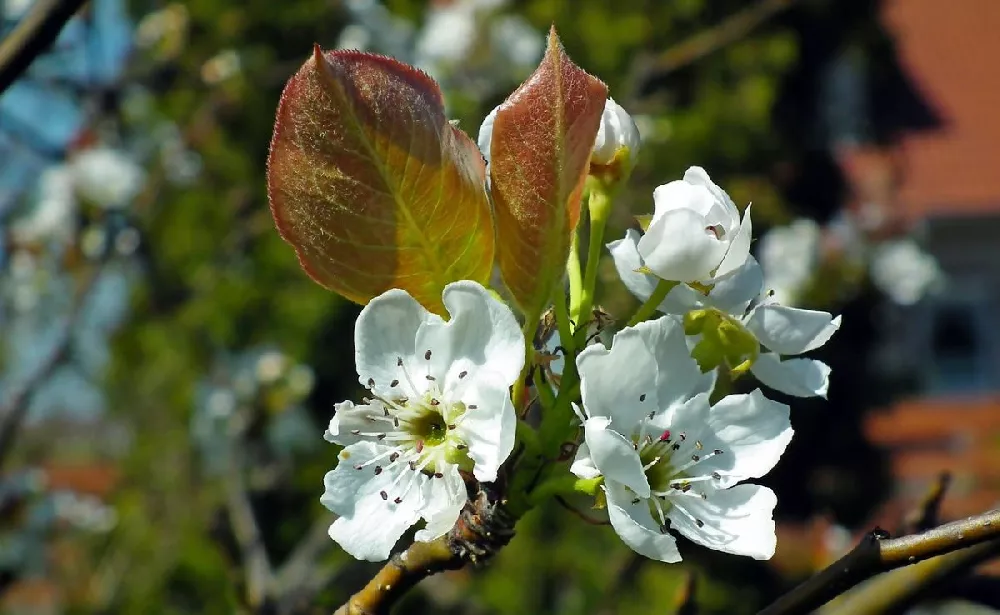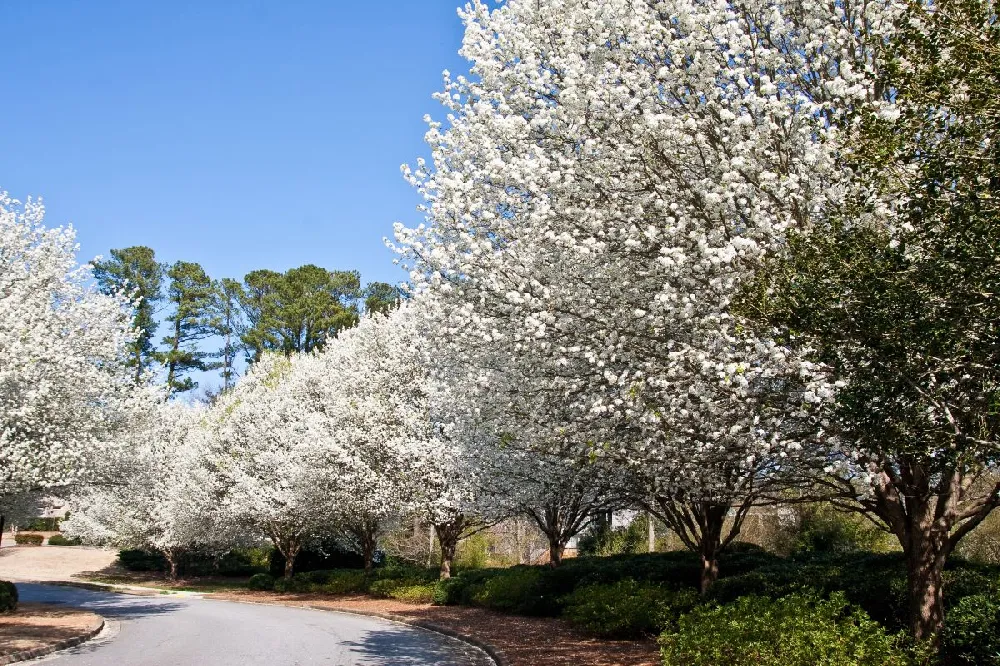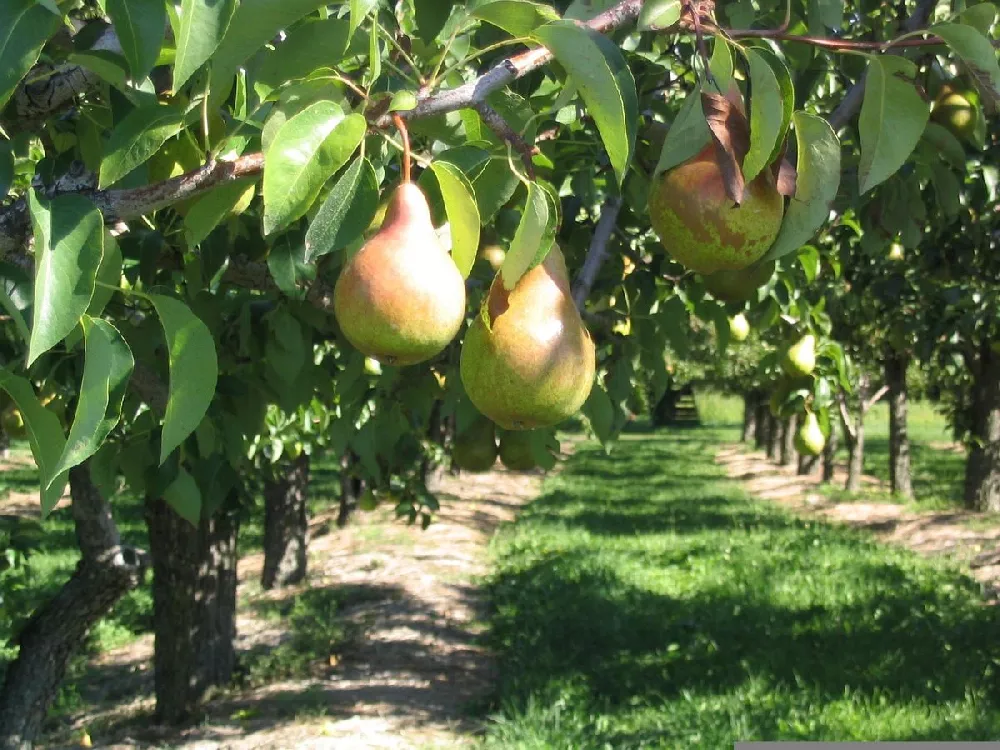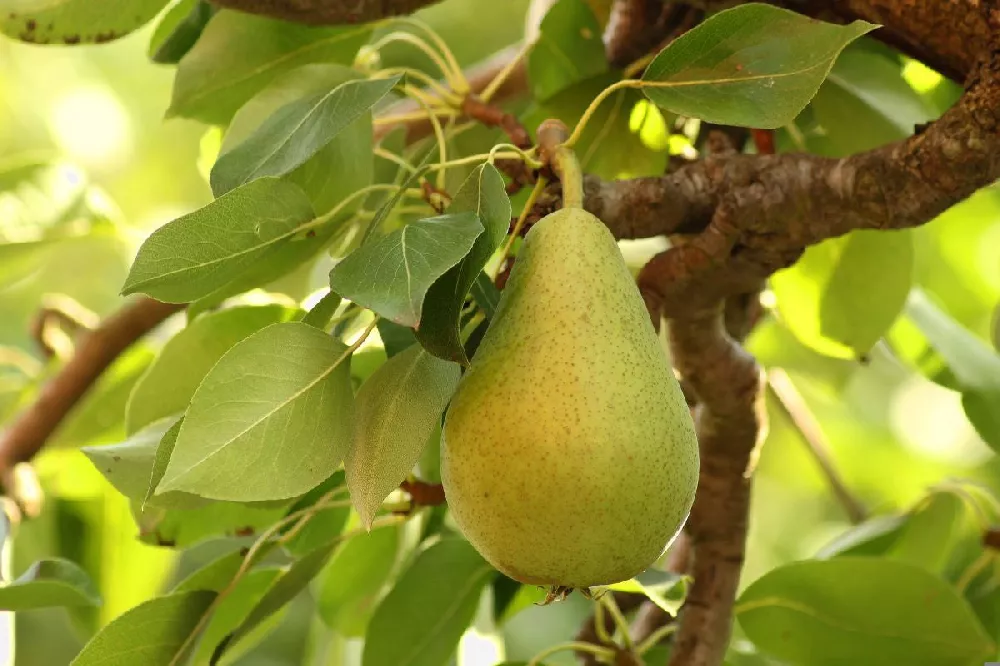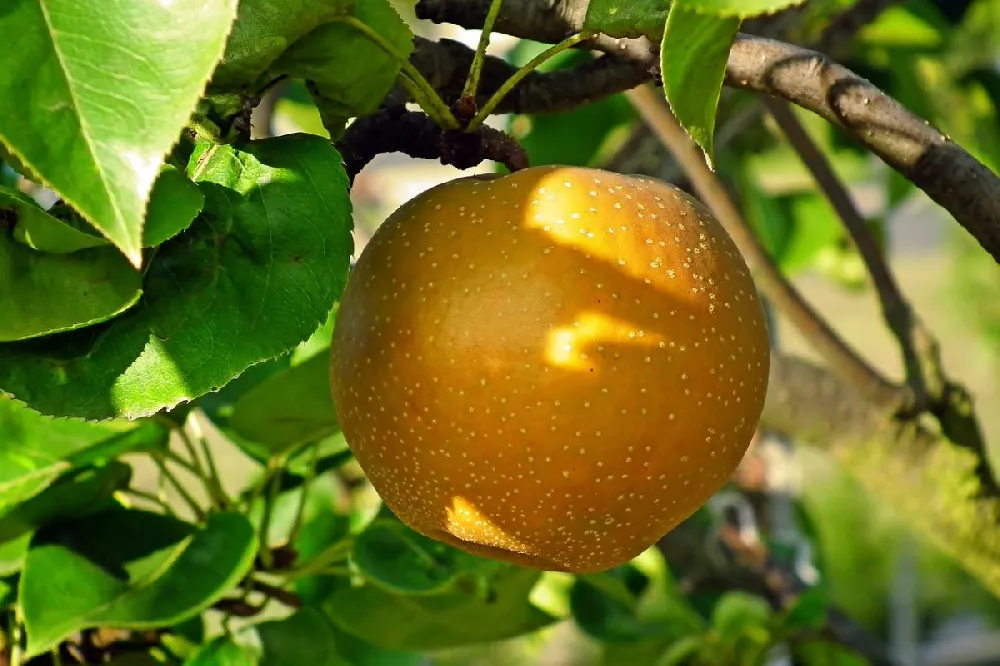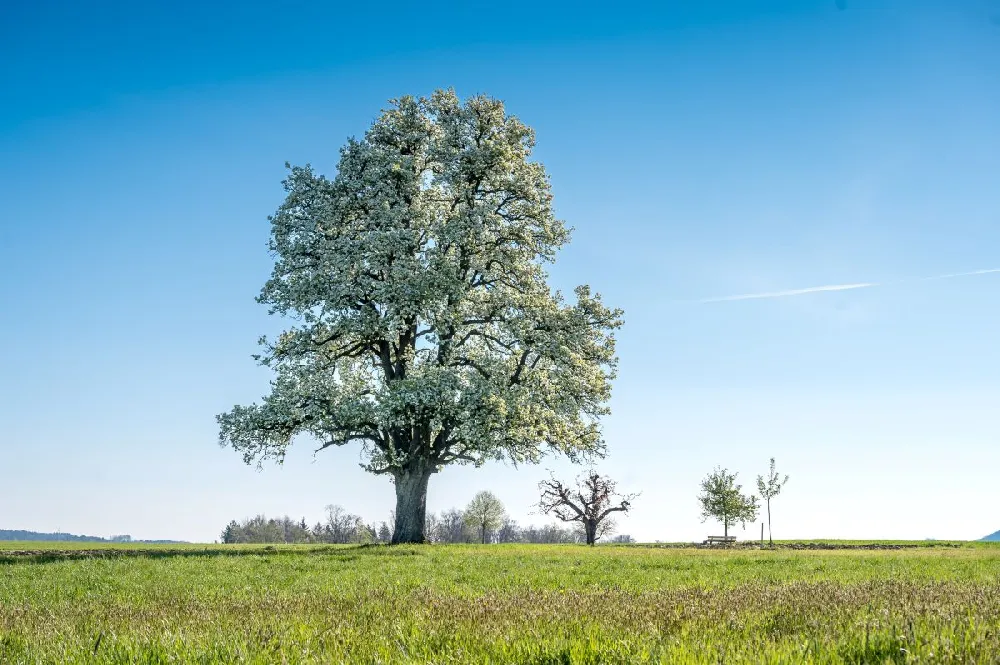- Home >
- Ornamental Trees >
- 20th Century (Nijisseiki) Asian Pear
20th Century (Nijisseiki) Asian Pear for Sale - Buying & Growing Guide
It's hard to imagine a tree that can provide both beauty and a large set of fruits as reliably as the 20th Century Asian Pear. This plant, which can go by the name “Nijisseiki” or its scientific name, Pyrus pyrifolia 'Nijisseiki,' develops many sweet and durable fruits and offers profuse white blooms each year. In fall, this tree will continue to catch your eye as its leaves transition to a vibrant red hue.
- The 20th Century Asian Pear Tree provides delicious fruits that keep well in storage.
- The ornamental features of this tree, especially its flowers, are just as valuable as the fruits.
- The leaves of this plant turn bright red in the fall.
Enter your zip code to find nearby stores that may carry this plant.
Plant Care
Sunlight

The 20th Century Asian Pear Tree should grow where there are at least six hours of direct sunlight per day.
Watering
Water deeply and often during establishment. After establishment, water when the first one to two inches of soil has dried out.
Fertilizing

Fertilize during spring using a balanced fertilizer or one that has lower volumes of nitrogen.
Planting and Care
Planting instructions
If you want your 20th Century Asian Pear Tree to not only remain healthy but also look its best and produce the greatest quantity of fruits, you should plant it in full sunlight. You should also give this tree about 10 to 15 feet of space to encourage horizontal branching, which often leads to the greatest fruit production and an easier harvest. To plant this tree, dig a hole that is as deep as the root ball is tall and at least twice as wide. Backfill with healthy soil and cover the area with mulch.
Watering and nutrients
After planting a 20th Century Asian Pear Tree, you should water it multiple times per week to aid establishment. After the first few growing seasons, you can reduce your watering frequency and supply water whenever you notice that the first one to two inches of soil have become dry. Feed your 20th Century Asian Pear in spring with a balanced fertilizer. However, you should also know that too much nitrogen can cause this plant to focus more on producing leaves rather than fruits. As such, a low-nitrogen fertilizer may be more suitable.
Pollination
The 20th Century Asian Pear Tree blooms with many flowers and is a self-fertile tree. What that means is that you’ll need only one of these trees to produce a viable harvest. However, if you want to maximize your harvest, you should plant at least one other 20th Century Pear Tree nearby. Doing so allows for cross-pollination, which typically leads to higher fruit yields each year. When in bloom, the 20th Century Pear Tree will attract many insects that will be responsible for conducting pollination.
Pruning
The best time to prune your 20th Century Asian Pear is during the early spring. For this tree, it is best to focus on thinning the canopy and developing an overall form that is conducive to fruit production. Typically, this means removing any branches that grow at a narrow-angle while encouraging those that grow more horizontally to the ground. You should also perform some pruning during the fruit development stage. At that time, it can be beneficial to remove some of the smaller fruits to ease the stress on each branch.
Pests, diseases and animals
Unfortunately, the 20th Century Asian Pear Tree can be vulnerable to a few pest and disease issues. Fungal infections are some of the most common diseases, with black spot being one of the most widespread. This tree may also suffer from pear rust and other complications. The 20th Century Pear Tree can also experience infestations of aphids, coddling moths and caterpillars. Likewise, you may also have problems with animals and insects that attempt to eat this tree’s fruits before you have a chance to harvest them.
Harvesting
Generally, the harvest period for the 20th Century Asian Pear Tree will fall somewhere between August and late September. However, what’s most important is ensuring that your tree’s fruits have plenty of time to ripen on the tree, which is why you should do a taste test before you harvest the majority of the fruits. When the fruit of this tree is ready for picking, it should be quite easy to remove by hand using a slight twisting motion.
Achieving maximum results
Thinning the canopy of your 20th Century Asian Pear Tree is one of the most important maintenance tasks you’ll need to perform. Thinning the canopy by removing crossing branches encourages better air circulation and allows sunlight to reach all branches, which reduces fungal infections and makes for better fruit development. You should also consider covering your 20th Century Asian Pear Tree with netting during fruit production to ensure that wildlife does not enjoy the fruits before you have a chance to.
FAQs
What does a 20th Century Asian Pear taste like?
Most Asian pears taste a lot like the typical pears you are used to picking out at your local grocery store. However, the 20th Century Asian Pear is often a bit sweeter than other pears and has a different texture. These fruits have firmer flesh, with a texture similar to that of an apple, and they are also very juicy compared to other pears.
How should you store a 20th Century Asian Pear?
One of the main benefits of growing a 20th Century Asian Pear Tree is that this tree's fruits keep very well. The firm flesh of these fruits makes it less likely that they will be damaged during and after harvest. The best way to store these fruits is by placing them in a plastic or paper bag in the refrigerator. In that storage setting, these fruits should last up to a month. When left at room temperature, they will stay fresh for about one week.
Does the 20th Century Asian Pear Tree produce a lot of fruit?
After just a few growing seasons, your 20th Century Asian Pear Tree will reach an age at which it is mature enough to produce flowers and fruits. The first few harvests that this tree provides may be somewhat small. However, over the years, this plant shows an incredible ability to increase its fruit production dramatically. Year-to-year, the harvests, a 20th Century Asian Pear Tree can produce, may double or triple. By the time this plant is mature, you can expect its harvest to be massive.
Compare Similar Products
You can't add more Product Name - Product size to the cart.
OK